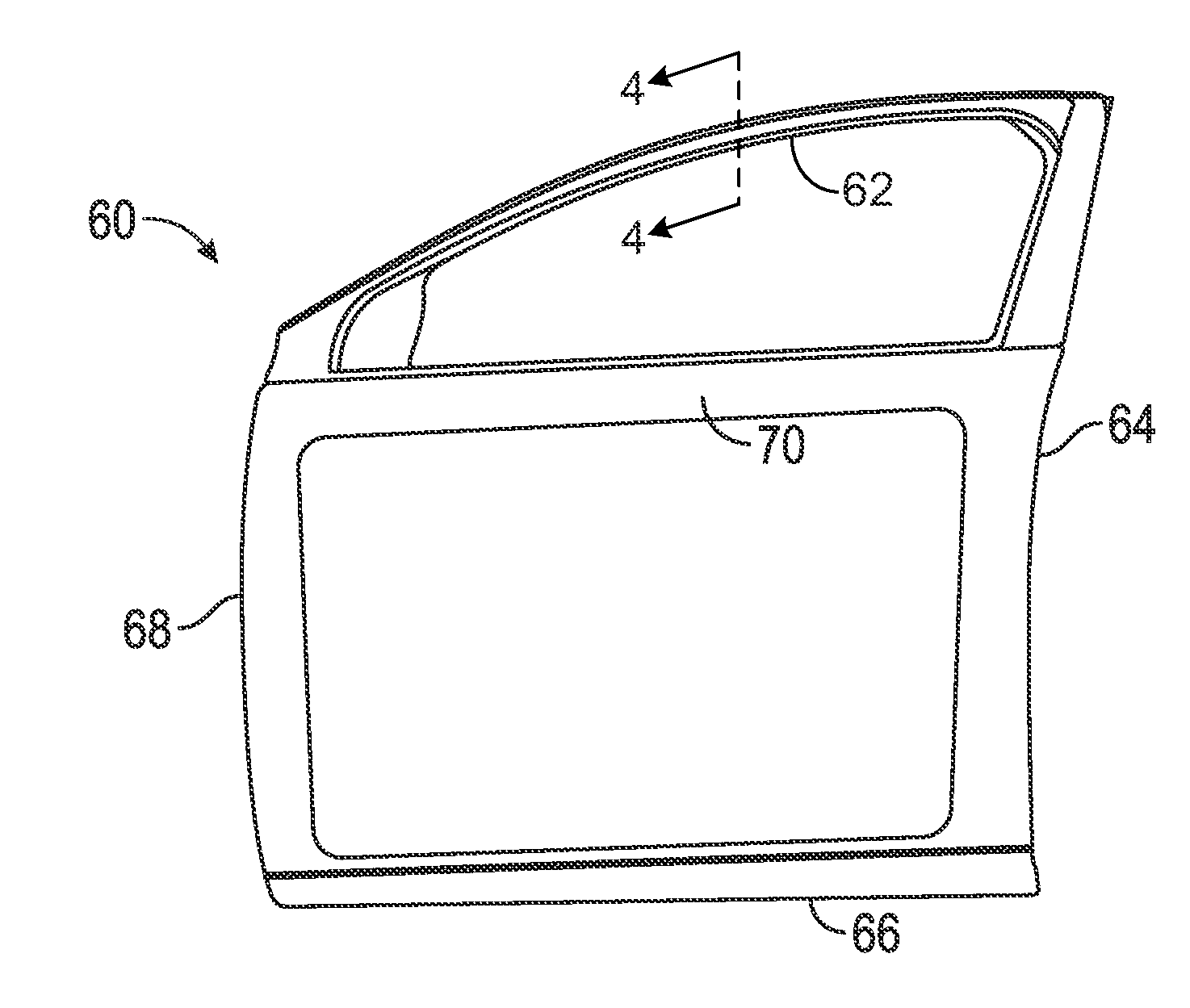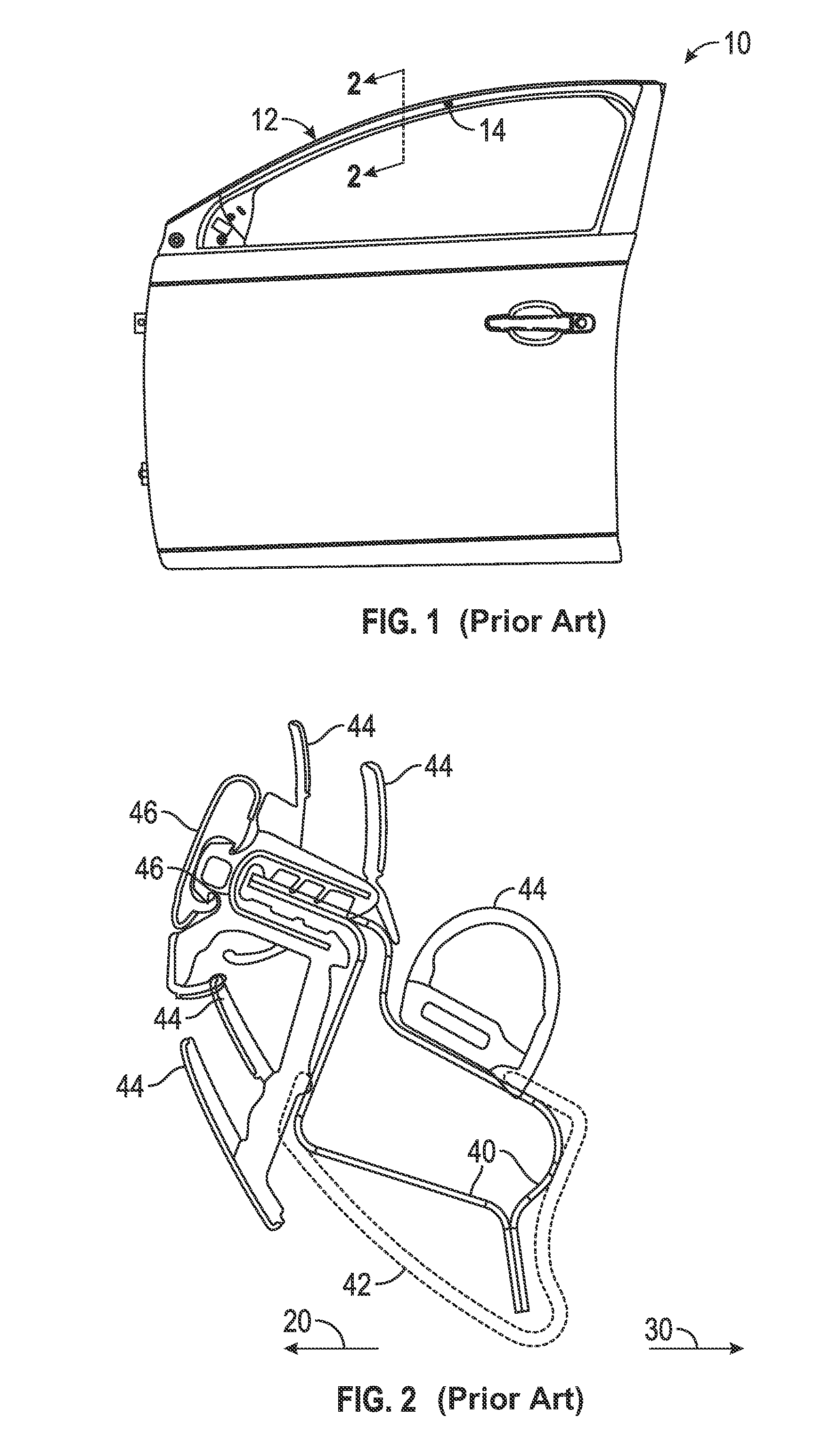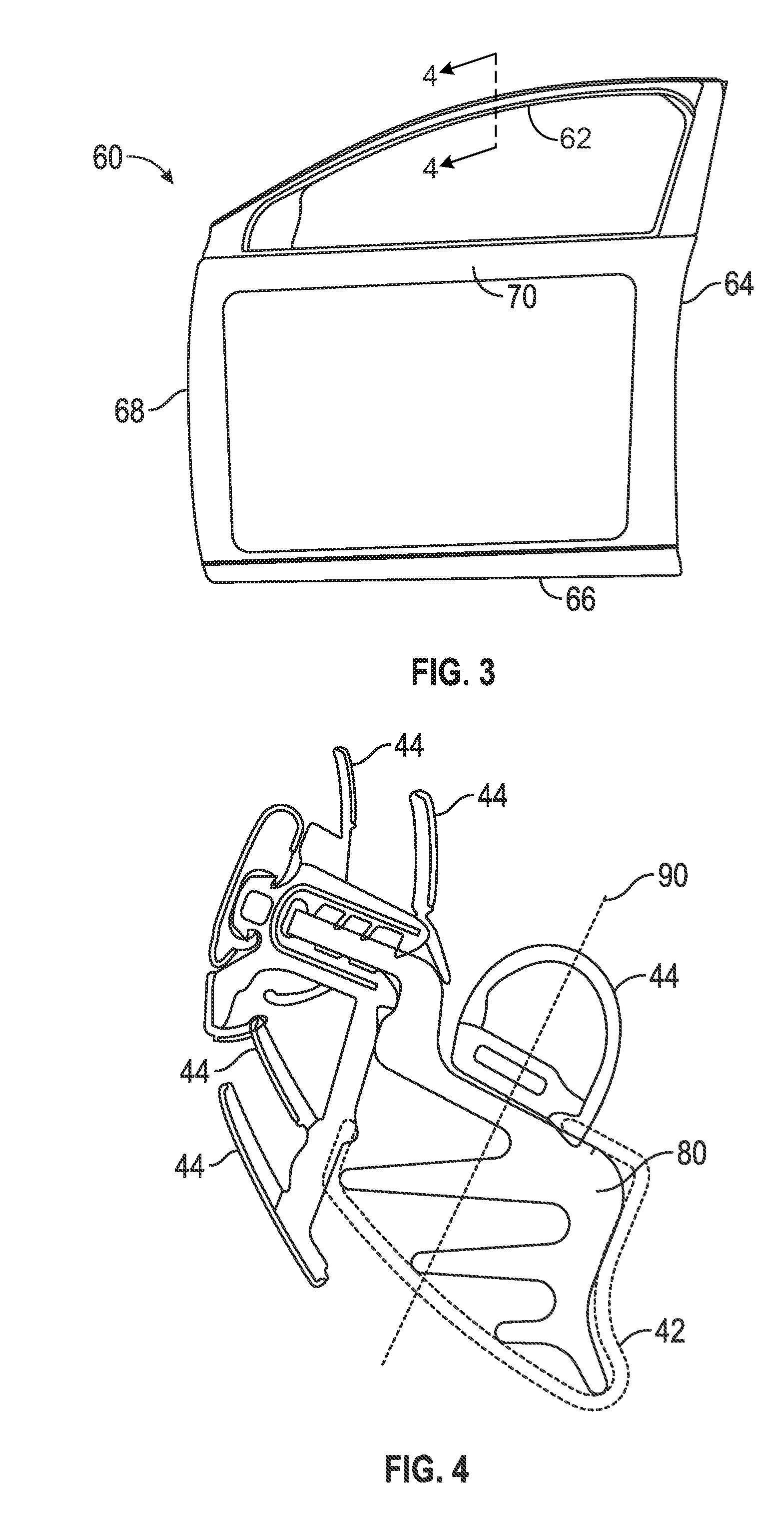Stiffeners for cast light-metal door headers
a technology of light-metal and riveters, which is applied in the direction of doors, mechanical equipment, transportation and packaging, etc., can solve the problems of ineffective increase of bending stiffness and inability to produce closed cross-sections by die casting, and achieve maximum incremental bending stiffness and effective use
- Summary
- Abstract
- Description
- Claims
- Application Information
AI Technical Summary
Benefits of technology
Problems solved by technology
Method used
Image
Examples
first embodiment
[0026]FIG. 5 is a cross-sectional illustration of the cast header section 80 with stiffness enhancement. A stiffener 100 is added to the cast header section 80 in order to increase the area moment of inertia, or resistance to bending, of the cross section. The stiffener 100 has a tube shape, which could either be roll-formed or extruded. The stiffener 100 is preferably made of aluminum, but could be any other metal or even a composite material. The stiffener 100 can be pressed into position in a V-shaped cavity 102 of the cast header section 80, and permanently bonded with an adhesive. The stiffener 100 could also be formed into a shape matching the V-shaped cavity 102 and cast in place during the casting of the cast door inner panel 60, where the stiffener 100 would serve as part of the casting die for this portion of the cast header section 80. The stiffener 100 embodies its own closed section, and also forms a closed section with the cast header section 80 around the V-shaped cav...
second embodiment
[0027]FIG. 6 is an illustration of a cast door header cross section with stiffness enhancement. A stiffener 110 has a generally channel-like shape which fits over the open portion of the cast header section 80. The stiffener 110 includes features 112 and 114 which enable the stiffener 110 to be snap-fit in place on the cast header section 80. The feature 112 is a web extending from the body of the stiffener 110 inwardly toward the cast header section 80, where the feature 112 engages with an opposing web on the cast header section 80. The feature 114 is a curved edge of the stiffener 110 which wraps around a free edge of the cast header section 80, as shown.
[0028]An adhesive could also be applied to the contact locations on the stiffener 110 and the cast header section 80 just before the stiffener 110 is snap-fit into place, where the snap-fit allows the cast door inner panel 60 to immediately continue on to the next step of the door assembly process while the adhesive cures, and th...
third embodiment
[0029]FIG. 7 is an illustration of a cast door header cross section with stiffness enhancement. A stiffener 120 includes the same design features as the stiffener 110 of FIG. 6 (and may in fact be identical to the stiffener 110), but the stiffener 120 is used with a cast header section 82 which is different than the cast header section 80. In particular, the cast header section 82 eliminates two shorter transverse webs which do little to increase lateral bending stiffness because of their proximity to the neutral axis 90. This illustrates how the stiffener 120 can provide an overall more mass-efficient door header design by eliminating material (in the cast header section 82) which is close to the neutral axis 90 and replacing it with material (in the stiffener 120) which is as far as possible from the neutral axis 90 while still meeting packaging constraints.
PUM
 Login to View More
Login to View More Abstract
Description
Claims
Application Information
 Login to View More
Login to View More - R&D
- Intellectual Property
- Life Sciences
- Materials
- Tech Scout
- Unparalleled Data Quality
- Higher Quality Content
- 60% Fewer Hallucinations
Browse by: Latest US Patents, China's latest patents, Technical Efficacy Thesaurus, Application Domain, Technology Topic, Popular Technical Reports.
© 2025 PatSnap. All rights reserved.Legal|Privacy policy|Modern Slavery Act Transparency Statement|Sitemap|About US| Contact US: help@patsnap.com



